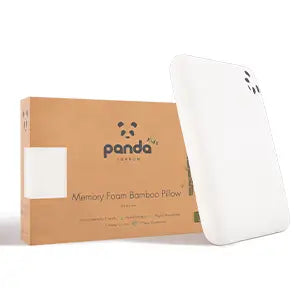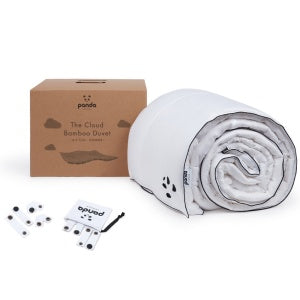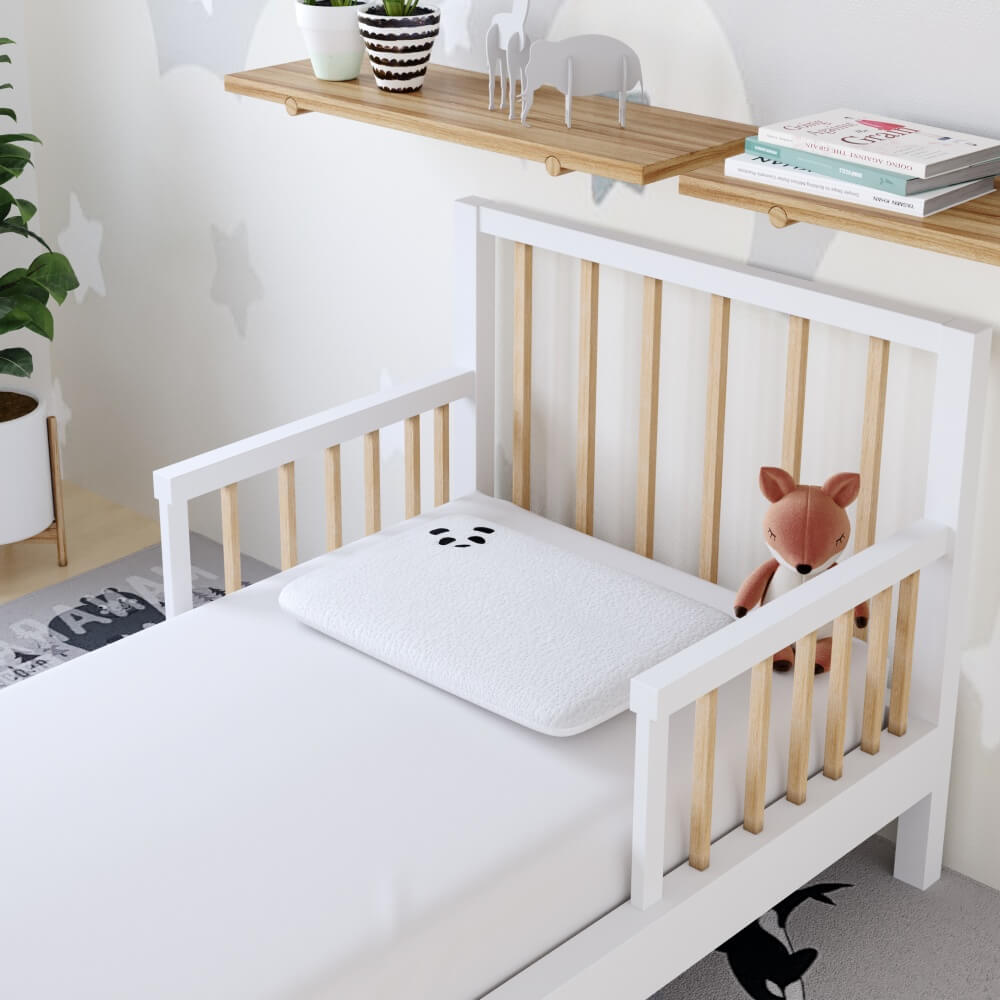Stage 3: The reproductive phase
When the vegetative growth phase is over, the bamboo will produce flowers and seeds. Depending on the environmental conditions in which the bamboo plant is grown, such as temperature and rainfall, it might take several years for the seeds and flowers to bloom. Once the bamboo has produced seeds, the plant usually dies back and begins the cycle again. This is because the energy required to reproduce is so taxing that the bamboo can not sustain itself for much longer.
The production of seeds is an integral part of a bamboo’s growth and development cycle. It allows for the propagation of new plants and the continuation of the species and horticulturists to use the seeds themselves for food or medicine. Bamboo seeds are a popular snack in Asia and are commonly used to treat medical conditions in India, such as coughs and fevers.
Maintaining and encouraging optimal bamboo growth conditions
As mentioned above, bamboo must be grown in an environment that provides the plant with sufficient water, light, and soil nutrients. You need to take care of the watering, especially during the dry season, but don't overwater as it can lead to root rot. If your bamboo plant has more access to sunlight, you’d want to water it accordingly since the soil will dry it quickly. In addition, fertilisers and pesticides that can get rid of pests while providing the soil with the necessary nutrients are essential. It’s also encouraged to regularly prune and thin your bamboo plants so that the stems aren’t excessively crowded and don’t break or fall off because of weakness.
To sum it up, growing bamboo is a long process that requires daily commitment and the right environmental conditions to flourish for years to come. But it’s definitely worth it to reap the rewards of this incredible wonderplant!


![[MattressTopper] Panda London Memory Foam Bamboo Mattress Topper package box](http://pandalondon.com/cdn/shop/files/Bamboo_Mattress_Topper_Package_Box.webp?v=1742301823&width=1500)
![[MattressTopper] Panda London Memory Foam Bamboo Mattress Topper on the floor](http://pandalondon.com/cdn/shop/products/Panda-Memory-Foam-Bamboo-Mattress-Topper-Yoga-e1624045454555.jpg?v=1758795458&width=1000)
![[MattressTopper] Bamboo Mattress Topper Lifestyle Image with Memory Foam Pillows Product Page](http://pandalondon.com/cdn/shop/files/Bamboo_Mattress_Topper_Lifestyle_Image_with_Memory_Foam_Pillows_Product_Page.webp?v=1758795458&width=800)
![[MattressTopper] Bamboo Mattress Topper Lifestyle Image with Bamboo Pillows In the Garden room Product Page](http://pandalondon.com/cdn/shop/files/Bamboo_Mattress_Topper_Lifestyle_Image_with_Bamboo_Pillows_In_the_Garden_room_Product_Page.webp?v=1758795458&width=800)
![[MattressTopper] Panda London Memory Foam Bamboo Mattress Topper side](http://pandalondon.com/cdn/shop/files/Mattress_Topper_Isolated_-_resized.jpg?v=1758795458&width=800)
![[HybridMattressPro] Main Image for Hybrid Bamboo Mattress Pro with all awards](http://pandalondon.com/cdn/shop/files/Hybrid_Bamboo_Mattress_Pro_Main_product_Image_with_awards.webp?v=1753971649&width=1000)
![[HybridMattressPro] Breathable Hybrid Bamboo Mattress](http://pandalondon.com/cdn/shop/products/Breathable-Hybrid-Bamboo-Mattress.jpg?v=1753971649&width=1920)
![[HybridMattressPro] Hybrid Bamboo Mattress Pro Cover Zip](http://pandalondon.com/cdn/shop/files/Hybrid_Bamboo_Mattress_Cover.jpg?v=1753971649&width=800)
![[HybridMattressPro] Panda Hybrid Bamboo Mattress Pro](http://pandalondon.com/cdn/shop/files/Hybrid_Bambo_Memory_Foam_Mattress_-_BioCell_Foam_x.jpg?v=1755095108&width=800)
![[HybridMattressPro] Couple on a Hybrid Bamboo Mattress Pro](http://pandalondon.com/cdn/shop/files/Hybrid_Bamboo_Mattress_Couple.jpg?v=1753971649&width=800)
![[CloudDuvet] Panda London The Cloud Bamboo Duvet Packaging](http://pandalondon.com/cdn/shop/products/Panda-London-The-Cloud-Bamboo-Duvet-Panda-Life-scaled_00a651ad-4ca3-4105-b520-12a94c1a4f71.jpg?v=1713363286&width=1920)
![[CloudDuvet] Panda London The Cloud Bamboo Duvet Rolled](http://pandalondon.com/cdn/shop/products/Duvet-Listing-Images03.jpg?v=1713361452&width=1000)
![[CloudDuvet] Panda London The Cloud Bamboo Duvet Girl Huggin a Duvet on the Bed](http://pandalondon.com/cdn/shop/files/Cloud_Bamboo_Duvet_-_Lady_Hugging_it_on_Bed_LifestyleImage.jpg?v=1719327585&width=1000)
![[CloudDuvet] Panda London The Cloud Bamboo Duvet Guy In the Air with Cloud Bamboo Duvet](http://pandalondon.com/cdn/shop/files/GuyonaHybridBambooMattresswithCloudDuvet.jpg?v=1743097928&width=2000)
![[CloudDuvet] Panda Cloud Duvet Winter on the bed lifestyle image](http://pandalondon.com/cdn/shop/files/Panda_Cloud_Duvet_Winter_on_the_Bed_Lifestyle-1_image.jpg?v=1747994959&width=1000)
![[BBWhite] White 100% Bamboo Bedding](http://pandalondon.com/cdn/shop/files/Pure_White_Full_Bed.webp?v=1719581797&width=1000)
![[BBWhite] White 100% Bamboo Bedding Texture](http://pandalondon.com/cdn/shop/files/100_Bamboo_Bedding_-_Pure_White_-_Close_Up_02.webp?v=1719581781&width=1000)
![[BBWhite] White 100% Bamboo Bedding Woman in bed sleeping](http://pandalondon.com/cdn/shop/files/100-Bamboo-Bedding-Set-Pure-White-BB.webp?v=1719581846&width=768)
![[BBWhite] White 100% Bamboo Bedding Woman Duvet cover buttons](http://pandalondon.com/cdn/shop/files/hand_and_buttons_1.webp?v=1719581781&width=1000)
![[BBWhite] White 100% Bamboo Bedding Woman in bed looking and smiling-](http://pandalondon.com/cdn/shop/files/SatonMadeBed-White100_BambooBedding-white_-_BB_SideShot1000x1000.webp?v=1719581864&width=980)
![[BBUrbanGrey] Urban Grey 100% Bamboo Bedding](http://pandalondon.com/cdn/shop/files/Made_Bed_-_Urban_Grey_-_Wide_Shot_2_1_1.webp?v=1754572609&width=1000)
![[BBUrbanGrey] Cloud Duvet Urban Grey 100% Bamboo Bedding Set](http://pandalondon.com/cdn/shop/files/Cloud_Duvet_-_Grey_-_Close_up_2.webp?v=1754572609&width=1000)
![[BBUrbanGrey] Urban Grey 100% Bamboo Bedding Set Woman sitting on the bed](http://pandalondon.com/cdn/shop/files/Sat_in_Bed_-_Grey_100__Bamboo_Bedding_-_Wide_Shot.webp?v=1754572609&width=1000)
![[BBUrbanGrey] Urban Grey 100% Bamboo Bedding Set Woman Duvet buttons Panda London](http://pandalondon.com/cdn/shop/files/hand_buttons_grey_bedding_1.webp?v=1754572609&width=1000)
![[BBUrbanGrey] Woman Sitting on the Bamboo Bedding with coffee](http://pandalondon.com/cdn/shop/files/SatonMadeBed-White100_BambooBedding-SideShot1000x1000.jpg?v=1754572609&width=1000)
![[BBNavyBlue] Deep Sea Navy Blue 100% Bamboo Bedding](http://pandalondon.com/cdn/shop/files/Made_Bed_-_Navy_-_Wide_Shot_3_copy.webp?v=1754576637&width=1000)
![[BBNavyBlue] Deep Sea Navy Blue 100% Bamboo Bedding Texture](http://pandalondon.com/cdn/shop/files/Cloud_Duvet_-_Navy_-_Close_up_2.webp?v=1754576637&width=1000)
![[BBNavyBlue] Deep Sea Navy Blue 100% Bamboo Bedding Woman Sitting on the bed](http://pandalondon.com/cdn/shop/files/Sat_Up_in_Bed_-_Navy_100__Bamboo_Bedding_-_Hands_on_Bed.webp?v=1754576637&width=1000)
![[BBNavyBlue] Deep Sea Navy Blue 100% Bamboo Bedding Duvet Cover Buttons](http://pandalondon.com/cdn/shop/files/Cloud_Duvet_Cover_Buttons_-_Deep_Sea_Navy.webp?v=1754576637&width=1000)
![[BBNavyBlue] Deep Sea Navy Blue 100% Bamboo Bedding Woman sitting on the bed looking away](http://pandalondon.com/cdn/shop/files/SatonMadeBed-White100_BambooBedding-SideShot1000x1000-001.webp?v=1754576652&width=980)
![[BBPink] Vintage Pink Blue 100% Bamboo Bedding](http://pandalondon.com/cdn/shop/files/Made_Bed_-_Pink_-_Wide_Shot_copy.webp?v=1754576652&width=1000)
![[BBPink] Vintage Pink Texture 100% Bamboo Bedding](http://pandalondon.com/cdn/shop/files/Cloud_Duvet_-_Pink_-_Close_up_2.webp?v=1754576652&width=1000)
![[BBPink] Vintage Pink Woman Sitting on the 100% Bamboo Bedding](http://pandalondon.com/cdn/shop/files/Sat_Up_in_Bed_-_Pink_-_Hands_on_Bed.webp?v=1754576652&width=1000)
![[BBPink] Vintage Pink Woman Sitting on the 100% Bamboo Bedding Duvet Cover](http://pandalondon.com/cdn/shop/files/Cloud_Duvet_Cover_Buttons_-_Vintage_Pink.webp?v=1754576652&width=1000)
![[BBPink] Vintage Pink Woman Sitting on the 100% Bamboo Bedding Woman looking far away](http://pandalondon.com/cdn/shop/files/SatonMadeBed-White100_BambooBedding-SideShot1000x1000-001_Vintage_Pink.webp?v=1754576652&width=980)
![[BBGrey] Light Grey 100% Bamboo Bedding](http://pandalondon.com/cdn/shop/files/Made_Bedding_in_Bedroom_-_Urban_Grey_-_Wide_Shot.webp?v=1754576637&width=1000)
![[BBGrey] Light Grey 100% Bamboo Bedding texture](http://pandalondon.com/cdn/shop/files/Texture17.webp?v=1754576637&width=1000)
![[BBGrey] Light Grey 100% Bamboo Bedding with Woman smiling](http://pandalondon.com/cdn/shop/files/Sat_Up_in_Bed_-_Grey_-_Hands_on_Bed.webp?v=1754576637&width=1000)
![[BBGrey] Light Grey 100% Bamboo Bedding with Duvet Cover buttons](http://pandalondon.com/cdn/shop/files/Cloud_Duvet_Cover_Buttons_-_Quiet_Grey.webp?v=1754576637&width=1000)
![[BBGrey] Light Grey 100% Bamboo Bedding with Woman smiling and sitting coffee](http://pandalondon.com/cdn/shop/files/SatonMadeBed-White100_BambooBedding-SideShot1000x1000-002-_Grey.webp?v=1754576637&width=980)
 Hybrid Bamboo Pillow
Hybrid Bamboo Pillow Memory Foam Bamboo Pillow
Memory Foam Bamboo Pillow Kids Memory Foam Bamboo Pillow
Kids Memory Foam Bamboo Pillow Baby Memory Foam Bamboo Pillow
Baby Memory Foam Bamboo Pillow Panda Cloud Duvet
Panda Cloud Duvet Bamboo Summer Duvet
Bamboo Summer Duvet Kids Cloud Duvet
Kids Cloud Duvet
![[VintagePinkDC] Vintage Pink Duvet Cover 100% Bamboo Bedding Woman In Bed Sitting](http://pandalondon.com/cdn/shop/files/Vintage_Pink_Duvet_Cover_Bamboo_Bedding_Woman_in_bed.webp?v=1721052470&width=1000)





![[KidsDuvet] Kids Cloud Duvet product image](http://pandalondon.com/cdn/shop/products/Panda-London_Kids_Duvet-scaled.jpg?v=1713363289&width=1920)
![[KidsDuvet] Kids Cloud Duvet on a cotbed](http://pandalondon.com/cdn/shop/files/Kids-KidsCloudDuvet.jpg?v=1750342405&width=2000)
![[KidsDuvet] Kids Cloud Bamboo Duvet Folded](http://pandalondon.com/cdn/shop/files/Kids_Cloud_Bamboo_Duvet_-_Folded_-_Logo_Shown_-_White_Background_Kids_Duvet.jpg?v=1750342405&width=1000)
![[KidsDuvet] Kids_CloudBambooDuvet-CornerLip-WhiteBackground](http://pandalondon.com/cdn/shop/files/Kids_CloudBambooDuvet-CornerLip-WhiteBackground.jpg?v=1750342405&width=2000)
![[KidsDuvet] Kids_Cloud_Bamboo_Duvet_-_Padded_-_Close_Up_Shot_Kids](http://pandalondon.com/cdn/shop/files/Kids_Cloud_Bamboo_Duvet_-_Padded_-_Close_Up_Shot_Kids.jpg?v=1750342405&width=1000)
![[KidsDuvet] Kids_CloudBambooDuvetRolled-WhiteBackground_1](http://pandalondon.com/cdn/shop/files/Kids_CloudBambooDuvetRolled-WhiteBackground_1.jpg?crop=region&crop_height=1697&crop_left=151&crop_top=0&crop_width=1697&v=1750342405&width=2000)
![[KidsDuvetUKSingle] UK_Single_kids_-_Summer_Cloud_Duvet_Main_Image](http://pandalondon.com/cdn/shop/files/UK_Single_kids_-_Summer_Cloud_Duvet_Main_Image.webp?v=1750342648&width=1000)
![[KidsDuvetUKSingle] UK_Single_Kids-Image_Summer_Bamboo_Duvet_Lifestyle_image-1](http://pandalondon.com/cdn/shop/files/UK_Single_Kids-Image_Summer_Bamboo_Duvet_Lifestyle_image-1.webp?v=1750342794&width=1000)
![[KidsDuvetUKSingle]UK_Single_Summer_Duvet_-_Duvet_Folded_Isolated-webp](http://pandalondon.com/cdn/shop/files/UK_Single_Summer_Duvet_-_Duvet_Folded_Isolated-webp.webp?v=1750342794&width=1000)
![[KidsDuvetUKSingle] UK_Single_Summer_Duvet_-_Snuggle_Snaps_Bag_02-webp](http://pandalondon.com/cdn/shop/files/UK_Single_Summer_Duvet_-_Snuggle_Snaps_Bag_02-webp.webp?v=1750343051&width=1000)
![[KidsDuvetUKSingle] UK_Single_Kids_-_Summer_Cloud_Snuggle_Snaps_Image_Webp](http://pandalondon.com/cdn/shop/files/UK_Single_Kids_-_Summer_Cloud_Snuggle_Snaps_Image_Webp.webp?v=1750343051&width=1500)
![[KidsDuvetAllSeason] Kids Duvet UK Single 10.5 tog rating all season one](http://pandalondon.com/cdn/shop/files/Kids_All_Seasn_10.5_Tog_Panda_Cloud_Duvet_Main_Image.jpg?v=1750685858&width=1920)
![[KidsDuvetAllSeason] Texture Duvet Cloud Panda](http://pandalondon.com/cdn/shop/files/Kids_All_Season_Panda_Cloud_Bamboo_Duvet_-_Padded_-_Close_Up_Shot.jpg?crop=region&crop_height=1900&crop_left=169&crop_top=0&crop_width=1900&v=1750686755&width=2239)
![[KidsDuvetAllSeason] Rolled Duvet All Season 10.5 tog](http://pandalondon.com/cdn/shop/files/Kids_All_Season_Duvet_Image_002_Panda_Cloud_Duvet.jpg?v=1750686755&width=1000)
![[KidsDuvetAllSeason] Panda Cloud Duvet Corner](http://pandalondon.com/cdn/shop/files/Kids_All_Season_Panda_Cloud_Cloud_Bamboo_Duvet_-_Corner_Lip_-_White_Background.jpg?v=1750686755&width=4848)
![[KidsDuvetAllSeason] All season Panda Cloud Duvet](http://pandalondon.com/cdn/shop/files/Kids_All_Season_Duvet_UK_Single_Kids-Image_Summer_Bamboo_Duvet_Lifestyle_image-1_webp.jpg?v=1750686755&width=1000)
![[Cotbed] MattressProtectorKidsCotbe](http://pandalondon.com/cdn/shop/files/MattressProtectorKidsCotbe.jpg?v=1717589250&width=1857)
![[Cotbed] Mattress-Protector-Cot-Bed-768x768](http://pandalondon.com/cdn/shop/files/Mattress-Protector-Cot-Bed-768x768.jpg?v=1719409251&width=768)
![[Cotbed] Mattress-Protector-Cot-BedListing-Images02-](http://pandalondon.com/cdn/shop/files/Mattress-Protector-Listing-Images02-768x768.jpg?v=1719409251&width=768)
![[Cotbed] Mattress-Protector-Cot-BedListing-Images03](http://pandalondon.com/cdn/shop/files/Mattress-Protector-Listing-Images03-e1623787734812.jpg?v=1719409252&width=1300)
![[Cotbed] Mattress-Protector-Cot-BedListing-Images03 Corner](http://pandalondon.com/cdn/shop/files/Mattress-Protector-Listing-Images04-768x768.jpg?v=1719409251&width=768)
![[Cot] MattressProtectorKidsCot - Package](http://pandalondon.com/cdn/shop/files/MattressProtectorKidsCot.jpg?v=1719409259&width=1857)
![[Cot] MattressProtectorKidsCot - Package Full](http://pandalondon.com/cdn/shop/files/Mattress-Protector-Cot-768x768.jpg?v=1719409364&width=768)
![[Cot] Mattress-Protector-Listing-Images02-768x768](http://pandalondon.com/cdn/shop/files/Mattress-Protector-Listing-Images02-768x768111.jpg?v=1719409364&width=768)
![[Cot] Mattress-Protector-Listing-Images03-768x768](http://pandalondon.com/cdn/shop/files/Mattress-Protector-Listing-Images03-e16237877348121111.jpg?v=1719409365&width=1300)
![[Cot] Mattress-Protector-Listing-Images03-768x768](http://pandalondon.com/cdn/shop/files/Mattress-Protector-Listing-Images04-768x768111.jpg?v=1719409365&width=768)
